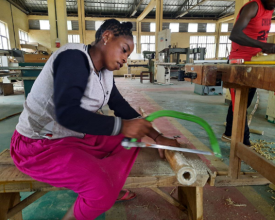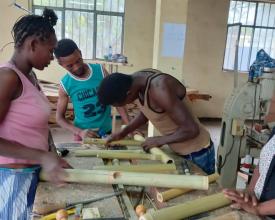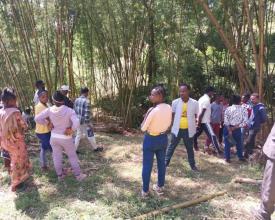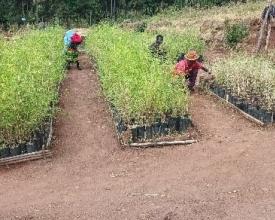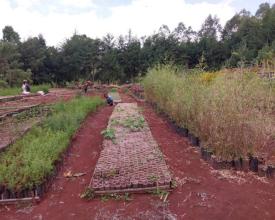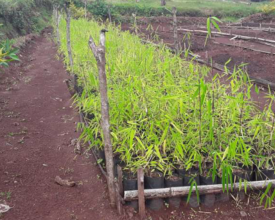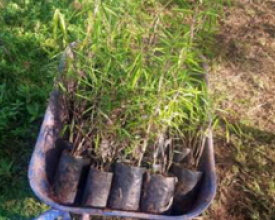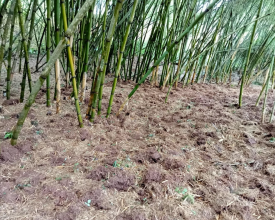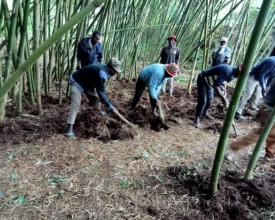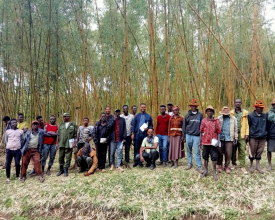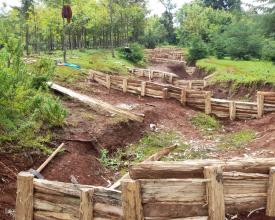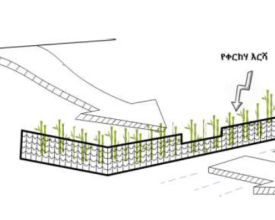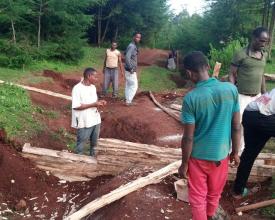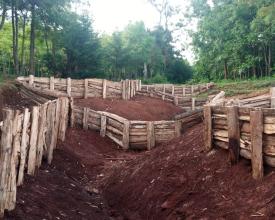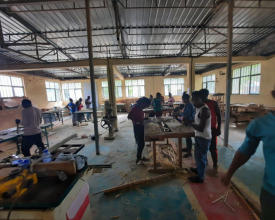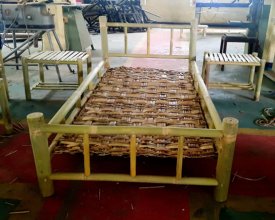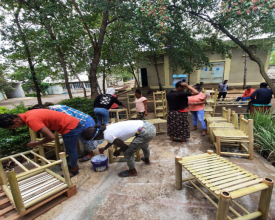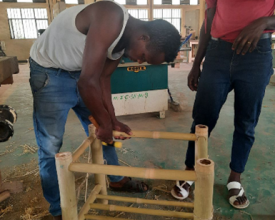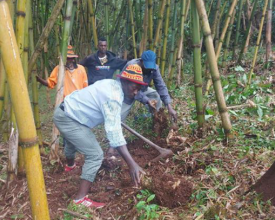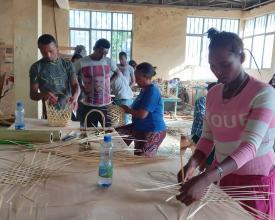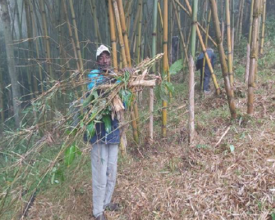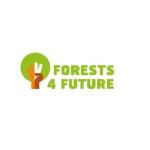
Green Growth through Bamboo: Empowering Communities for Economic and Environmental Resilience
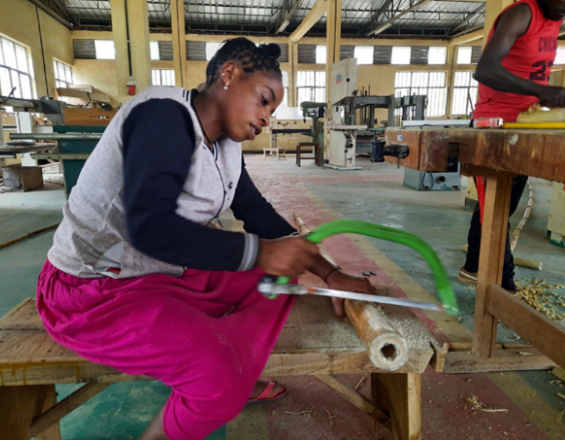
Land degradation is a pressing issue in Ethiopia, affecting over 85% of its land to varying degrees. Bamboo emerges as a crucial tool for land restoration due to its resilience in harsh environments, erosion-preventing root system, and rapid growth. Its economic potential is also significant, with quick growth cycles and diverse product applications. The Global Project Forests4Future (F4F), initiated by Deutsche Gesellschaft für Internationale Zusammenarbeit (GIZ), focuses on developing a sustainable bamboo production and management system. This project aims to rehabilitate and restore landscapes in the Southern Ethiopia Region (Lake Abaya and Lake Chamo Catchments), which are severely affected by erosion and sedimentation, and simultaneously stimulating economic growth for the community affected. Early results indicate promising progress in the restoration and economic revitalization efforts, showcasing the potential of bamboo-based initiatives for sustainable land management and community economic development in Ethiopia.
Context
Challenges addressed
Environmental Challenges:
- Soil Degradation: Addressing erosion and sustainable land practices.
- Biodiversity Loss: Mitigating biodiversity loss by restoring degraded habitats.
- Climate Change: Sequestering carbon and mitigating climate change.
- Water Quality: Improving the regulation of surface water flow and reducing soil erosion and sedimentation levels.
Social Challenges:
- Livelihood Security: Ensuring stability through sustainable economic activities.
- Employment Generation: Creating employment opportunities, particularly for marginalized groups.
- Capacity Building: Enhancing community skills for sustainable development.
Economic Challenges:
- Income Disparities: Promoting income and living for women and youth out of bamboo propagation, and processing.
- Economic Diversification: Introducing sustainable enterprises for growth.
- Market Access: Facilitating access to markets for local products, especially value-added bamboo products, to improve economic viability and competitiveness.
Location
Process
Summary of the process
The synergy among the five building blocks in the Forests4Future project creates a holistic approach to sustainable bamboo management and community development. Each building block complements and supports the others, forming an integrated system that maximizes positive impacts and outcomes.
- Building Block 1 feeds into Building Block 2 by providing seedlings for plantation establishment, while Building Block 2 supplies raw bamboo material to Building Blocks 3 and 4 for construction and processing.
- Building Block 3 complements Building Block 2 by providing gully restoration and soil erosion protection measures for erosion control in bamboo plantations, contributing to land restoration efforts.
- Building Block 4 adds value to bamboo products harvested from plantations, creating marketable goods that contribute to economic growth and sustainability.
- Building Block 5 supports all other building blocks by providing essential training programs that enhance skills, knowledge, and capacity along the entire bamboo value chain.
Building Blocks
Bamboo Seedling Production
The purpose of this building block is to showcase the successful establishment of bamboo nurseries by the Forests4Future initiative in its intervention zone. These nurseries play a crucial role in the local economy by selling young bamboo plants to generate income for the community. These plants are primarily used to create bamboo plantations, aiding in the rehabilitation of degraded land in the catchment area. Forests4Future specifically focuses on working with indigenous bamboo species, for example the Ethiopian highland bamboo (Yushania alpina k.), leveraging their rapid growth and ability to absorb greenhouse gases as an effective tool for carbon sequestration, aligning with global climate goals. Furthermore, the establishment of bamboo plantations not only contributes to land restoration but also provides a sustainable source of raw material for various industries, thereby enhancing economic opportunities in the region.
Enabling factors
- Community Engagement: Local community involvement is crucial for sustainable bamboo nursery operations.
- Technical Expertise: Access to knowledge and expertise in bamboo cultivation and nursery management ensures healthy growth and productivity.
- Market Access: Strong market linkages for selling bamboo products are necessary for income generation and sustainability.
- Policy Support: Favorable policies promoting sustainable forestry and supporting SMEs benefit the long-term viability of bamboo nurseries.
Lesson learned
- Community Ownership: Involving local communities in decision-making processes and ensuring they have a stake in the project's success fosters a sense of ownership and commitment.
- Capacity Building: Continuous training and capacity building programs for nursery operators and bamboo growers are crucial for improving productivity and quality standards.
- Market Diversification: Exploring diverse market opportunities beyond local sales, such as export markets or value-added products, can enhance revenue streams and market resilience.
Bamboo Plantation Establishment and Restoration
Forests4Future's Building Block 2 focuses on supporting communities to establish bamboo plantations in degraded communal land and erosion gullies. The seedlings for the plantations are sourced from local nurseries, as detailed in Building Block 1. As the bamboo reaches a certain growth stage, it can be harvested and sold to local bamboo processing units (PU), which then transform the raw material into valuable products, as discussed in Building Block 4. This approach not only promotes sustainable income generation for the community but also contributes to the restoration of degraded land. Bamboo's soil-protecting capacity plays a crucial role in long-term restoration efforts, particularly in areas vulnerable to erosion or already highly degraded like the Lake Abaya and Chamo catchment areas. Erosion and sedimentation pose significant threats to local farmers and fishers, making the restoration efforts with bamboo essential for protecting soils and ensuring future income opportunities for the communities.
Enabling factors
- Community Engagement: Raising awareness and local support for bamboo plantations.
- Technical Assistance: Essential expertise in bamboo cultivation and management.
- Market Access: Building strong value chains for steady income from bamboo products.
- Policy Support: Favorable policies for sustainable forestry and income generation.
Lesson learned
- Site Selection: Careful consideration of site conditions, such as soil type, water availability, and slope, is crucial for successful bamboo plantation establishment.
- Species Selection: Choosing appropriate bamboo species that are well-suited to local climatic and soil conditions is important for achieving optimal growth and productivity.
- Training and Capacity Building: Continuous training and capacity-building programs for farmers and plantation workers are essential for enhancing skills and knowledge in bamboo cultivation and management.
- Land Use Rights: Securing land use rights is essential for sustainability and effective resource management in the restored area.
- Monitoring and Evaluation: Regular monitoring and evaluation of plantation performance, including growth rates, yield, and environmental impacts, are necessary for making informed management decisions and optimizing outcomes (as part of the post-planting management activities).
Bamboo as Major Input for Gully Rehabilitation
Building Block 3 discusses the use of bamboo raw material and products for gully rehabilitation, integrating the eco-hydrological concept implemented by Forests4Future. This low-cost erosion protection measure has been successfully piloted and upscaled. Next to selling bamboo raw material to local processing units (PU) as described in Building Block 2, it can also be utilized to construct gully restoration measures. These infrastructure units consist of a series of semipermeable wooden barriers placed in erosion gullies in consideration of the water flow direction and intensity, forming a surface run-off regulating system that sequentially controls the flow of surface water. This unit plays a crucial role in regulating key hydrological parameters such as flow concentration and velocity, which in turn regulate hydro-logical and biological processes like runoff and infiltration. By mitigating erosion in gullies, these measures contribute to long-term gully restoration efforts. This technique and the skills required can be easily replicated by other farmers due to its relatively straightforward construction method, making it accessible for widespread adoption.
Enabling factors
- Technical Expertise: Access to expertise in eco-hydrology, erosion control, and bamboo construction is crucial for effective eco-hydrological projects.
- Community Engagement: Involving local communities in project planning fosters ownership and sustainability.
- Resource Availability: Adequate bamboo and other resources are essential for project implementation.
- Monitoring and Evaluation: Robust evaluation mechanisms ensure the effectiveness of measures and enable adjustments for long-term success.
Lesson learned
- Site Selection: Careful site (i.e. gully) selection considering factors such as slope, soil type, and vegetation cover is crucial for the effectiveness of eco-hydrological measures.
- Design Considerations: Proper design of wooden barriers and water flow control structures based on site-specific conditions and hydrological modeling enhances the performance of eco-hydrological measures.
- Maintenance and Upkeep: Regular maintenance and upkeep of eco-hydrological infrastructure, including repairing damaged barriers and clearing sediment buildup, are necessary for ensuring continued effectiveness.
- Community Involvement: Involving local communities experience and knowledge in project planning and implementation as well as monitoring and maintenance activities to increases awareness and ensures sustainability of eco-hydrological projects.
- Adaptive Management: Implementing adaptive management strategies based on monitoring data and feedback from local stakeholders helps in addressing challenges and improving project outcomes over time.
Local Bamboo Value-Added Processing Units
Building Block 4 focuses on the establishment and support of bamboo processing small and medium enterprises (SME) by Forests4Future in the intervention zone. The primary purpose of establishing such enterprise is to create associated business opportunities that focus on sustainable income generation and job creation for the local community. Raw bamboo material is predominantly sourced from local farmers in the area, including those supported by the project as detailed in Building Block 2. These units process raw bamboo material into valuable products, with a focus on furniture such as chairs, tables, beds, shelves, and various kitchen items. One significant success factor is the preservative treatment of bamboo against insects, ensuring product durability and quality. Additionally, bamboo products are affordable for the wider group of community, making items like wooden beds, which would otherwise be expensive, accessible. This affordability has clear benefits for the local population. Moreover, bamboo serves as an alternative or substitute for timber, reducing the pressure on natural forests in the area. By promoting the use of bamboo as a sustainable resource, the bamboo processing units contribute to environmental conservation and resource utilization efficiency.
Enabling factors
- Technical Expertise: Access to skills in bamboo processing, product design, and quality control is crucial for high-quality products.
- Market Access: Developing strong distribution channels is vital for sales and customer reach.
- Supply Chain Management: Efficient logistics and inventory control ensure smooth operations.
- Financial Support: Adequate funding is necessary for establishing and scaling up processing units.
- Easy Adoption: Unlike timber processing, bamboo techniques are simpler and require fewer resources, making them accessible to local communities.
Lesson learned
- Product Diversification: Diversifying product offerings beyond furniture, such as flooring or construction materials, can expand market opportunities and revenue streams.
- Quality Control: Implementing rigorous quality control measures throughout the production process is essential for maintaining product standards and customer satisfaction.
- Partnerships and Collaboration: Collaborating with local artisans, designers, and industry experts can enhance product innovation, market positioning, and competitiveness.
- Market Research: Conducting thorough market research and customer feedback analysis helps in understanding market trends, consumer preferences, and product demand, guiding business strategy and product development.
- Market Linkages: Maintaining strong market linkages and distribution channels is critical for sustaining market presence and ensuring timely delivery of products to customers. Regularly engaging with market stakeholders and adapting to market changes can help in maintaining competitiveness and meeting customer expectations.
- Sustainable Harvest: Sustainable harvest of bamboo positively contributes to the development of the resource base.
Bamboo Training and Capacity Building
Building Block 5 focuses on the provision of various bamboo trainings by Forests4Future to support different aspects of the bamboo value chain in their intervention zone. These trainings are essential as enabling factors for the success and sustainability of the bamboo-related activities undertaken by the project. Forests4Future provides both financial and technical assistance in organizing and implementing these trainings. Since the start of the project, Forests4Future has conducted multiple bamboo trainings tailored to specific needs, for example:
- Bamboo propagation: Trainings on bamboo propagation are provided to tree nurseries to ensure the successful propagation of bamboo seedlings for plantation establishment.
- Bamboo plantation/stand management and harvesting: These trainings cover various aspects of bamboo plantation management, including planting techniques, maintenance practices, pest and disease management, and sustainable harvesting methods.
- Bamboo preservation treatment: This training is essential for bamboo processing units to learn proper techniques for treating bamboo with chemical, hot water and cold water treatments and harvesting time consideration to reduce insect susceptibility of bamboo culm.
(...)
By offering these diverse trainings, Forests4Future aims to build the capacity and skills of local stakeholders involved in the bamboo value chain. This contributes to improved productivity, product quality, and overall sustainability of bamboo-related activities. Moreover, these trainings empower local communities to actively participate in and benefit from the economic and environmental benefits of bamboo.
Enabling factors
- Training Resources: Access to qualified trainers, materials, and facilities is crucial for effective bamboo trainings.
- Community Engagement: Involvement of local stakeholders enhances learning outcomes and ownership of skills.
- Continuous Learning: Follow-up sessions and peer networks reinforce training impact.
- Local Adaptation: Customizing content to suit local needs improves training effectiveness.
- Monitoring: Regular evaluation and participant feedback inform program improvements.
Lesson learned
- Tailored Training Programs: Designing training programs that are tailored to the specific needs and skill levels of participants enhances learning outcomes and practical application of knowledge.
- Hands-on Training: Incorporating hands-on, practical exercises and demonstrations in training sessions improves engagement and retention of learning.
- Community Empowerment: Empowering local communities to take ownership of training initiatives and become trainers themselves fosters sustainability and scalability of capacity-building efforts.
- Partnerships and Collaboration: Collaborating with local institutions, organizations, and experts in bamboo-related fields enhances the quality and reach of training programs.
- Feedback Mechanisms: Establishing effective feedback mechanisms, such as surveys, focus groups, and evaluation forms, enables continuous improvement of training content, delivery methods, and overall impact.
Impacts
Environmental Impacts:
- Bamboo effectively controls soil erosion, preventing sedimentation in water bodies and improving soil health.
- Bamboo plantations contribute significantly to carbon sequestration, mitigating greenhouse gas emissions and supporting climate resilience.
- Bamboo helps restore degraded land, enhancing ecosystem resilience and promoting sustainable land use.
- Bamboo plants support biodiversity by providing habitats for various species in intervention zones.
Social Impacts:
- Bamboo processing training empowers communities with skills and knowledge, leading to enhanced livelihoods and economic opportunities.
- Establishment of bamboo industries creates employment, especially benefiting smallholder farmers and women entrepreneurs.
- Training programs on bamboo propagation and processing build capacity, fostering self-reliance and entrepreneurship.
Economic Impacts:
- Bamboo-related activities generate sustainable income streams, reducing dependency on traditional livelihoods.
- Production of high-quality bamboo products stimulates market development, attracting buyers locally and internationally.
- Value addition through bamboo processing units increases market value, leading to higher profitability and competitiveness.
Beneficiaries
- Smallholder farmers & landowners, gaining sustainable livelihoods & improved land management.
- Local communities, benefiting from increased income, employment, & economic diversification.
- Women entrepreneurs & marginalized groups, receiving support & training.
Sustainable Development Goals
Story
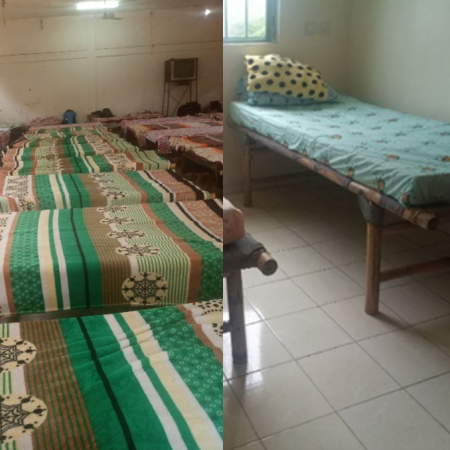
Addis Tesfa and Birhan Chora are small local bamboo processing enterprises supported by the Forests4Future Project in Ethiopia. These units are located in the project intervention landscape of Lake Chamo in the Southern Ethiopia Region. They were established in 2020, each with six youths, and have been producing various bamboo products, such as furniture.
As an initial start-up, Forests4Future provided hands-on technical training for the youths and bamboo processing power tools. Besides that, the local government established working sheds and arranged a loan. Consequently, the youths began producing and introducing new bamboo products based on community demand, supporting their livelihoods.
In 2020, during the outbreak of COVID-19, the GIZ Special Initiative on Training and Job Creation (SI Jobs) had the innovative idea to support manufacturing bamboo clinical beds due to the scarcity of them in Ethiopia. SI Jobs, in collaboration with Forests4Future, facilitated the necessary technical and financial support to the bamboo enterprises. As a result, they produced a significant number of bamboo beds for clinics and secured a high-tier contract to manufacture 2,000 beds for the regional health bureau offices. Those beds were then distributed to hospitals and clinics in the region. The turnover of the enterprises increased by 6.5 times compared to their initial capital. This was a win-win situation for both the health sector in Ethiopia and the local bamboo processing units.
With these profits, the enterprises were able to expand their production and purchase new processing machinery and other bamboo processing tools.

